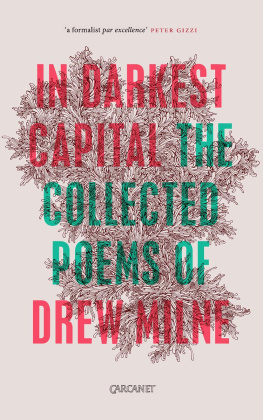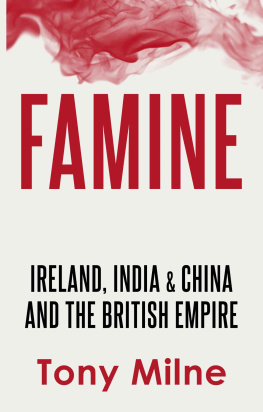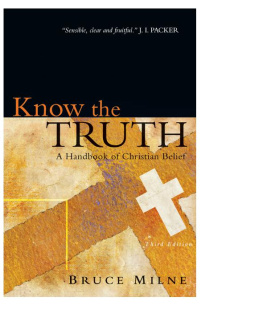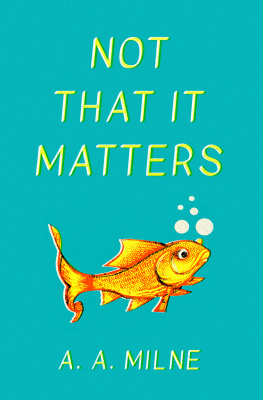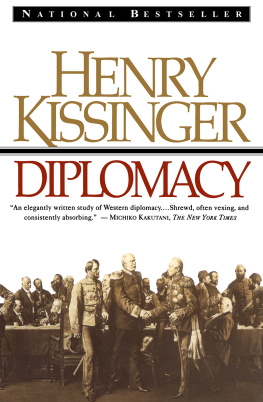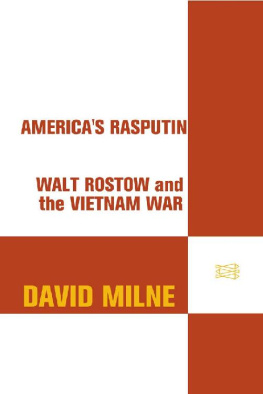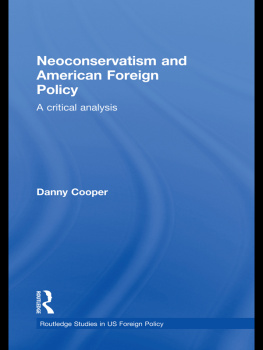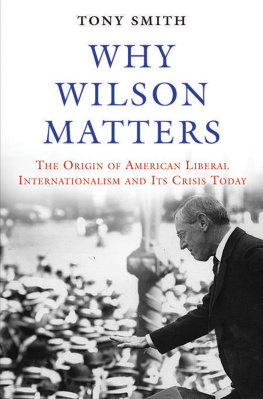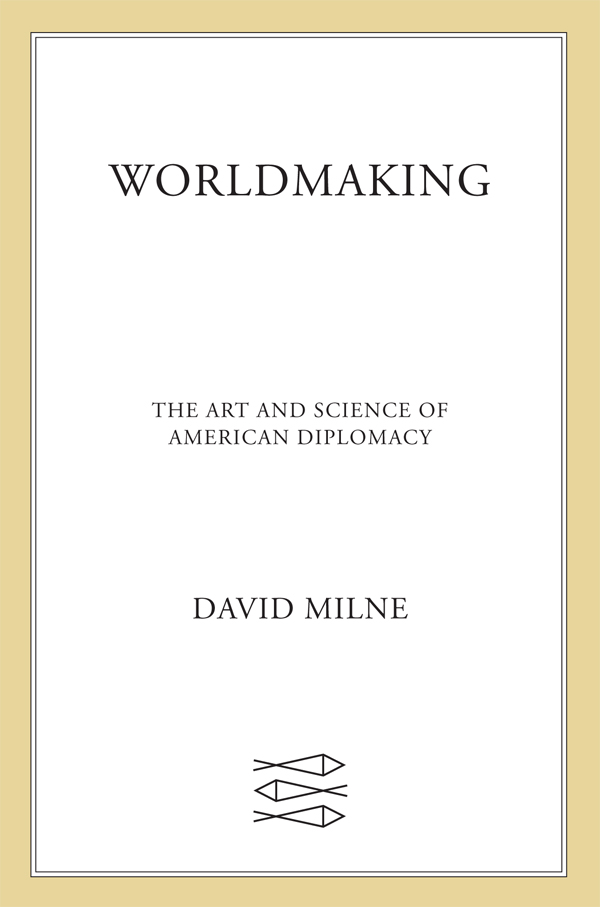Contents
Guide

The author and publisher have provided this e-book to you for your personal use only. You may not make this e-book publicly available in any way. Copyright infringement is against the law. If you believe the copy of this e-book you are reading infringes on the authors copyright, please notify the publisher at: us.macmillanusa.com/piracy.
For Emma, Benedict, and Anna
There is a spirit that rules us that we are chosen and prominently chosen to show the way to the nations of the world how they shall walk in the paths of liberty.
WOODROW WILSON
All plans of government, which suppose great reformation in the manners of mankind, are plainly imaginary.
DAVID HUME
Politics is an art and not a science, and what is required for its mastery is not the rationality of an engineer but the wisdom and the moral strength of a statesman.
HANS J. MORGENTHAU
History is just littered with problems that were solved that were supposed to be impossible.
PAUL WOLFOWITZ
In September 1949, a WB-29 took off from Okinawa, Japan, and flew north toward the Kamchatka peninsula, which hangs from northeastern Russia like a mastiffs tail. The bomber had been refitted to conduct surveillance and carried filters to detect anomalies in the atmosphere. As the plane flirted with Soviet airspace, radiation was detected at unnaturally high levels. Navy scientists at sea level confirmed that radioactive sludge was also present in the rainwater. There was only one plausible explanation: the Soviet Union had detonated its first atomic bomb.
It fell to David Lilienthal, the chairman of the U.S. Atomic Energy Commission, to inform the president. Truman found the news so surprisingsurely it was too soon for Moscow to have tested an atomic devicethat he scarcely lent it credence. He asked Lilienthal if he was sure that the radiation stemmed from a nuclear weapon and not a reactor malfunction. When Truman finally accepted Lilienthals word that the atomic source was weaponized, the president was confronted with a major decision: whether to respond by ordering the development of the hydrogen bomb, a fusion rather than a fission device with a destructive potential that was theoretically boundless.
Winston Churchill captured the H-bombs epochal nature in observing that the device was as far from the A-bomb as the atomic bomb itself from the bow and arrow. Whether to proceed was not simply a military decision; it was a philosophical one too. To facilitate a robust decision-making process, Truman established a three-man committee to present him with a majority recommendation, composed of Lilienthal, Secretary of Defense Louis Johnson, and Secretary of State Dean Acheson. Johnson was certain to recommend its development and Lilienthal was opposed. So Acheson would likely have the deciding vote. The secretary asked his two best strategic thinkers, George Kennan, the director of the Policy Planning Staff (PPS), and his deputy, Paul Nitze, to advise on whether Americas military future should be thermonuclear.
Reclusive and deliberative, Kennan set about his task in the usual way. He retreated to his office with books on history, philosophy, and literature and settled down to think and to write. Addressing a question of vast moral and strategic dimensions, confronting hypothetical worst-case scenarios that included the end of human life on earth, Kennan soon found himself physically and emotionally exhausted. His wife, Annelise, had recently given birth to their third child, and after completing his first draft Kennan joked to Acheson that he was tempted, day before yesterday, to go into the babys room and say: Go on, get up. Youre going to work today. Ill get in the crib. He crafted a seventy-nine-page paper, rich in history and philosophy, which counseled against building this fearsome weapon. A fusion device was morally repugnant and the whole idea of honing an atomic strategy was diabolicalleading as it could to a war in which everyone losesso an international organization, in this unique instance, offered the best way forward. Kennan sought to display this through the elegance of his prose and breadth of literary allusion, including a quotation from Shakespeares Troilus and Cressida :
And appetite, an universal wolf,
So doubly seconded with will and power,
Must make perforce an universal prey,
And last eat up himself.
Where a war with conventional weapons offered the possibility of conventional outcomesthe possibility of surrender and submissionKennan believed that weapons of mass destruction do not have this quality. They reach backward beyond the frontiers of western civilization, to the concepts of warfare which were once familiar to the Asiatic hordes They imply the admission that man not only can be but is his own worst and most terrible enemy. Summing up, Kennan quoted St. Paul, We know in part and we prophesy in part, before appealing to American values to guide the decision-making process: In such a time there is only one thing a nation can do which can have any really solid and dependable value: and that is to see that the initial lines of its policy are as close as possible to the principles dictated by its traditions and its nature.
Paul Nitzes operating style was very different. He was a former Wall Street banker adept in mathematics and deductive logic, a bureaucratic infighter who knew when to reach for the jugular, a Harvard postgraduate with a sophisticated understanding of international economic affairs. These qualitieshis facility with quantitative analysis in particularled Kennan to ask permission from Acheson in 1947 to add Nitze to his Policy Planning Staff. Acheson declined, observing that Kennan should be looking to hire a deep thinker, not a Wall Street operatora typically pointed Achesonian put-down. But Acheson formed a more positive view of Nitze in the intervening years. In mid-1949, Kennan decided to take a leave of absence from State, asking Acheson if he could appoint Nitze as his deputy with a view to his succeeding him after his departure. This time the secretary of state said yes, and with real enthusiasm. Nitze was implacably anti-Soviet and did not share Kennans view that agreement might be reached with Moscow over German reunification. Nitze was also a firm believer in maintaining the strongest possible military, that peace was primarily secured through strength. Nitzes approach was data driven and scientifically oriented. Kennan and Nitzes responses to the H-bomb dilemma revealed different worldviews and priorities.
Nitze first sought to comprehend the science of nuclear fusion. On consecutive days he met with J. Robert Oppenheimer (later a friend to Kennan) and Edward Teller, the first a skeptic of the wisdom of developing thermonuclear weapons, the second a strong proponent. Having played a key role in fathering the atomic bomba role that he viewed as justifiable in those wartime circumstancesOppenheimer wanted to play no part in siring a more terrible progeny. His personal view was that the United States should refuse to develop the weapon on moral grounds and hope that the Soviet Union would follow its example. But he understood that Nitze was unlikely to be swayed by wishful thinking and instead sought to convince him that the science of the hydrogen bomb was actually science fiction. While it was technically possible to construct and detonate a hydrogen bomb, Oppenheimer observed, moving such a necessarily massive device was another thing entirely. He told Nitze that a plane could not carry the cumbersome weaponrather, it would require an oxcart. This meant the fusion bomb was tactically impotent. All in all, Nitze recalled, [Oppenheimer] concluded the world would be much better off if no one had such weapons. Oppenheimer misrepresented the science as he feared the unleashing of a great evil.



